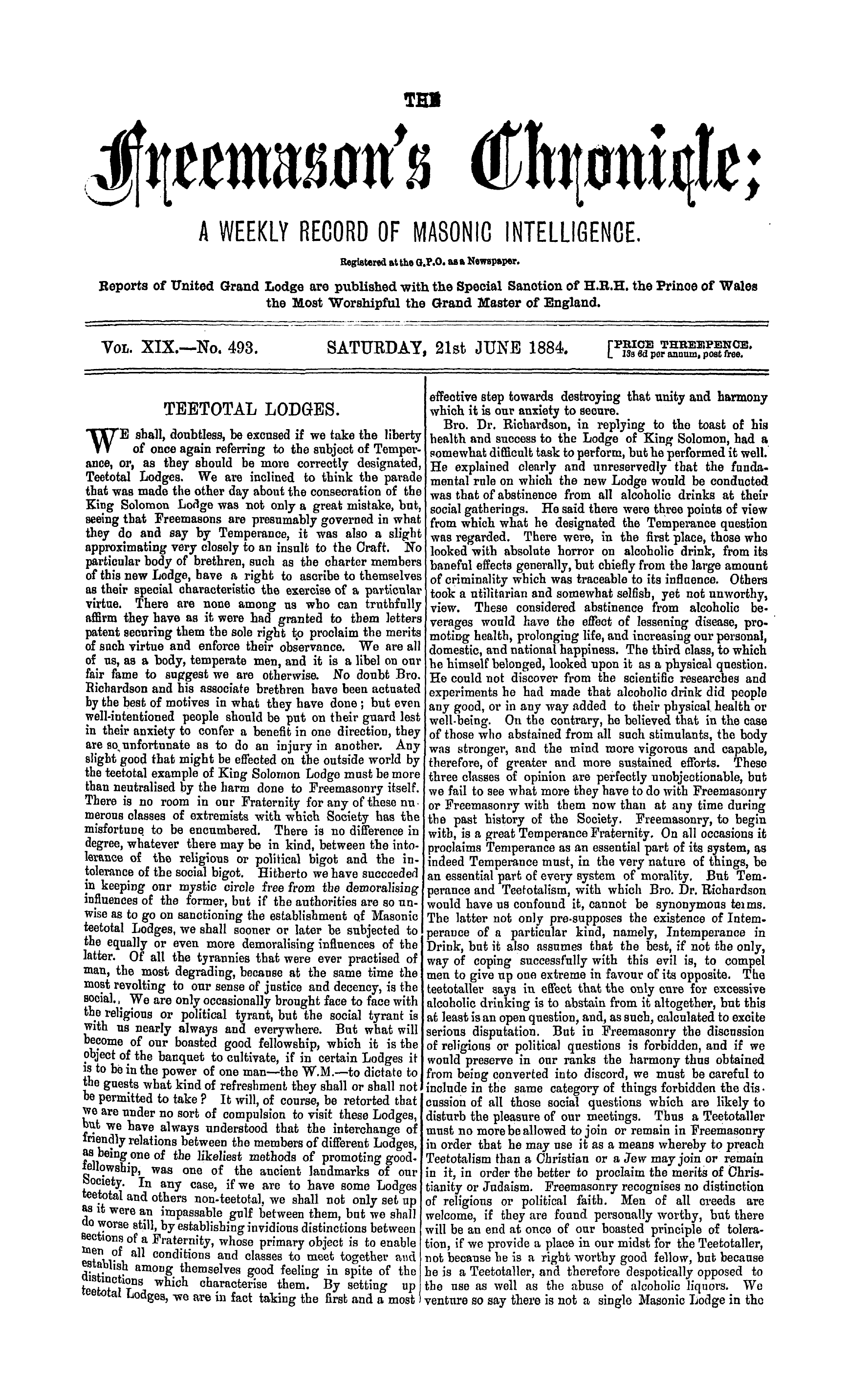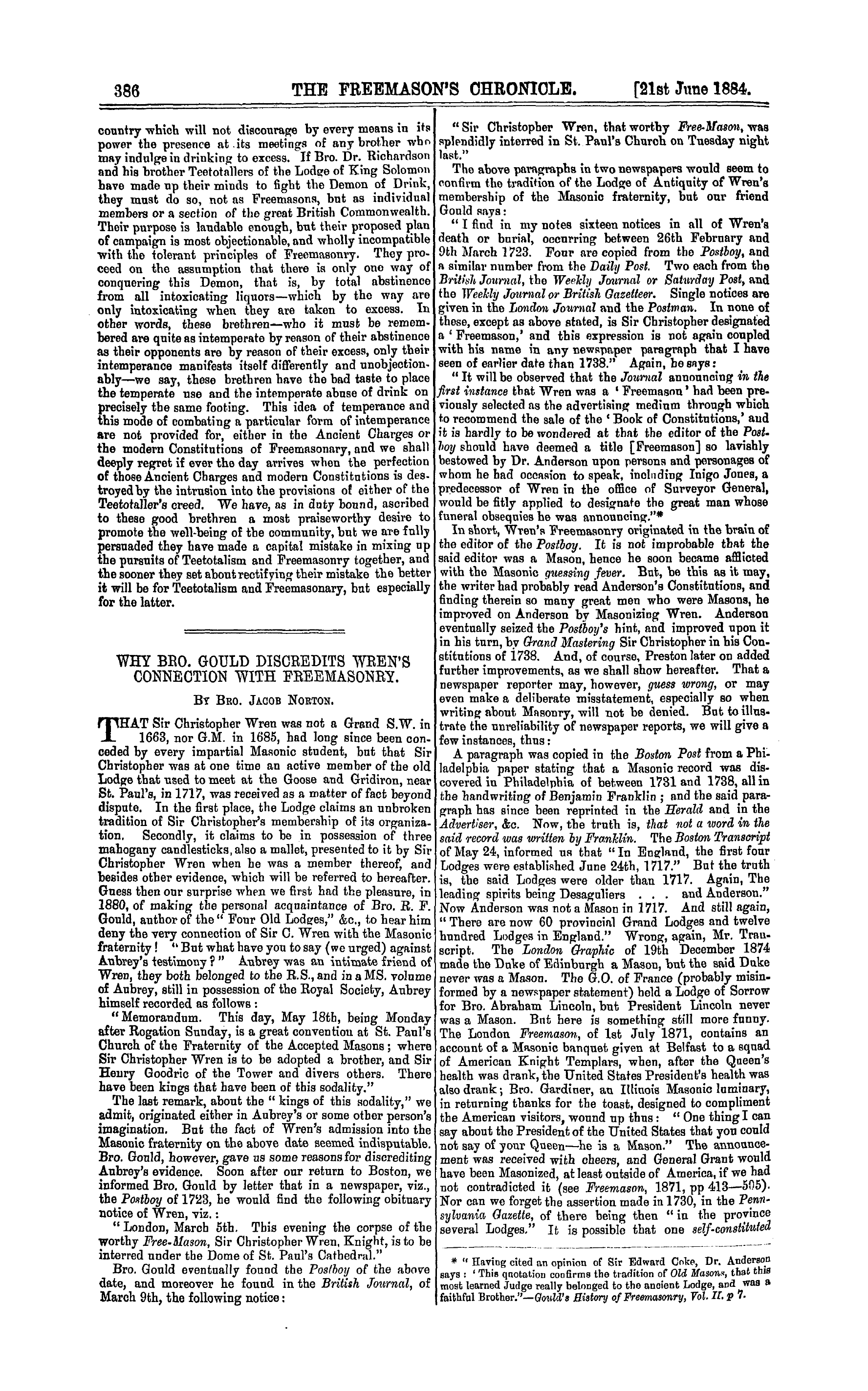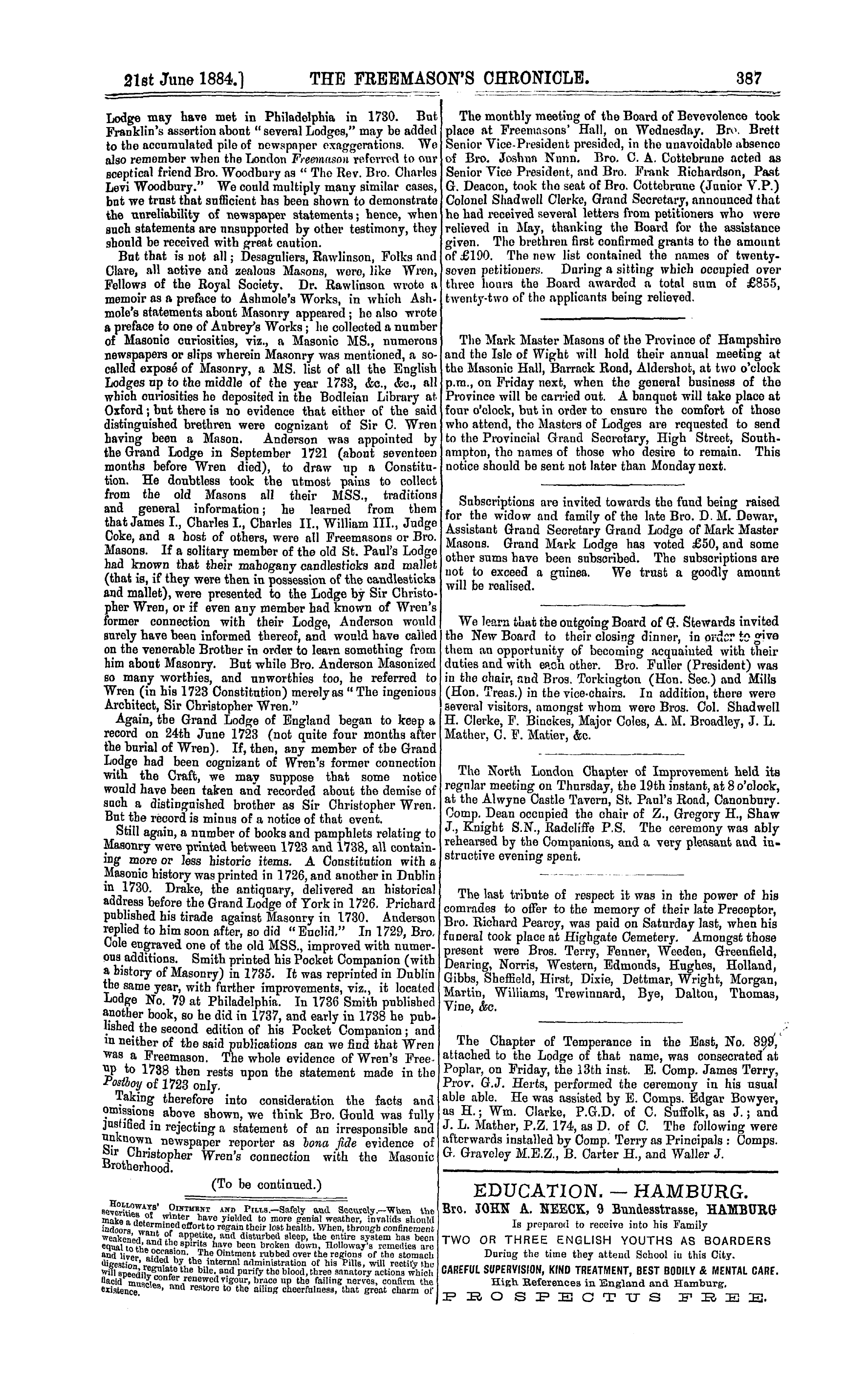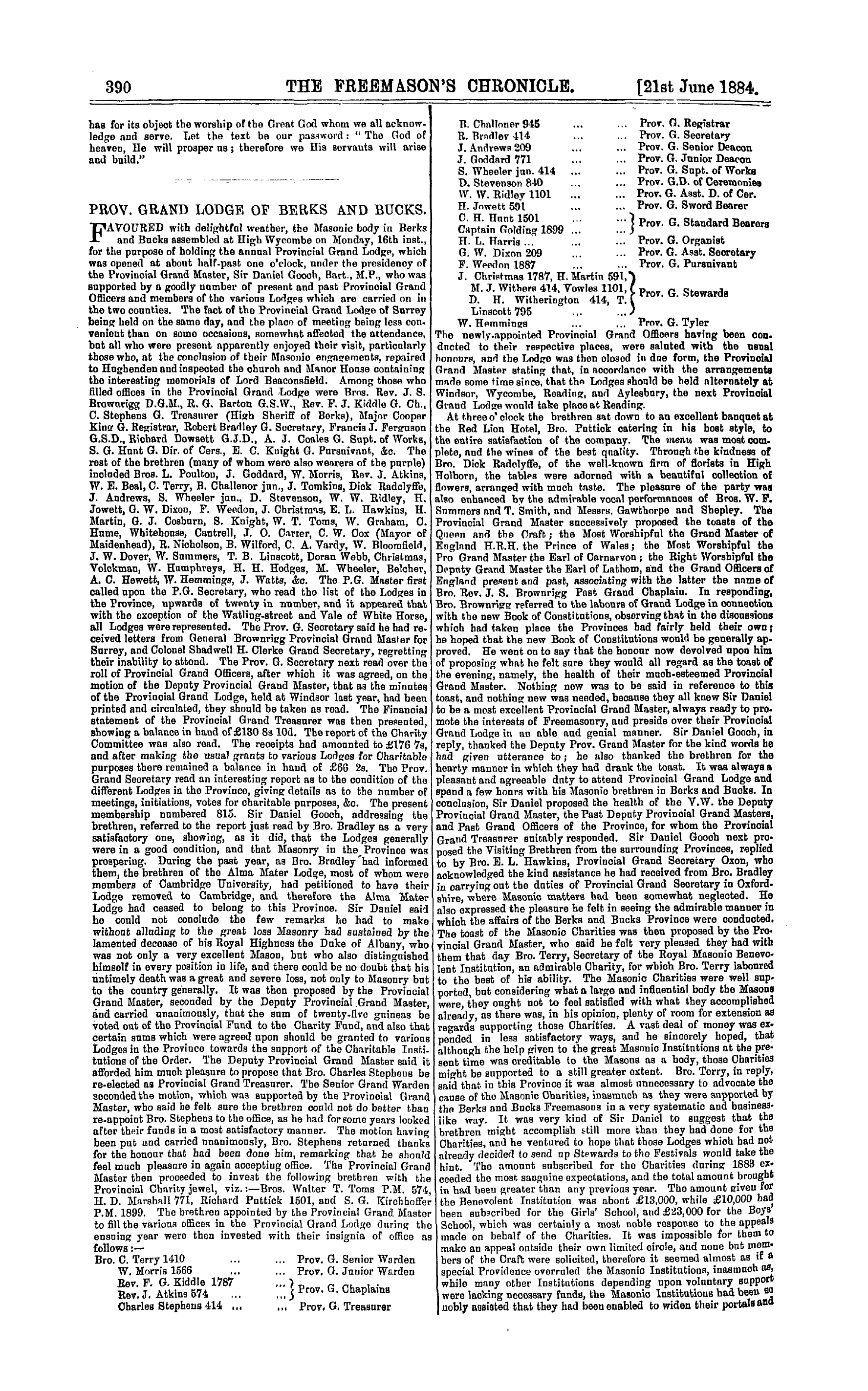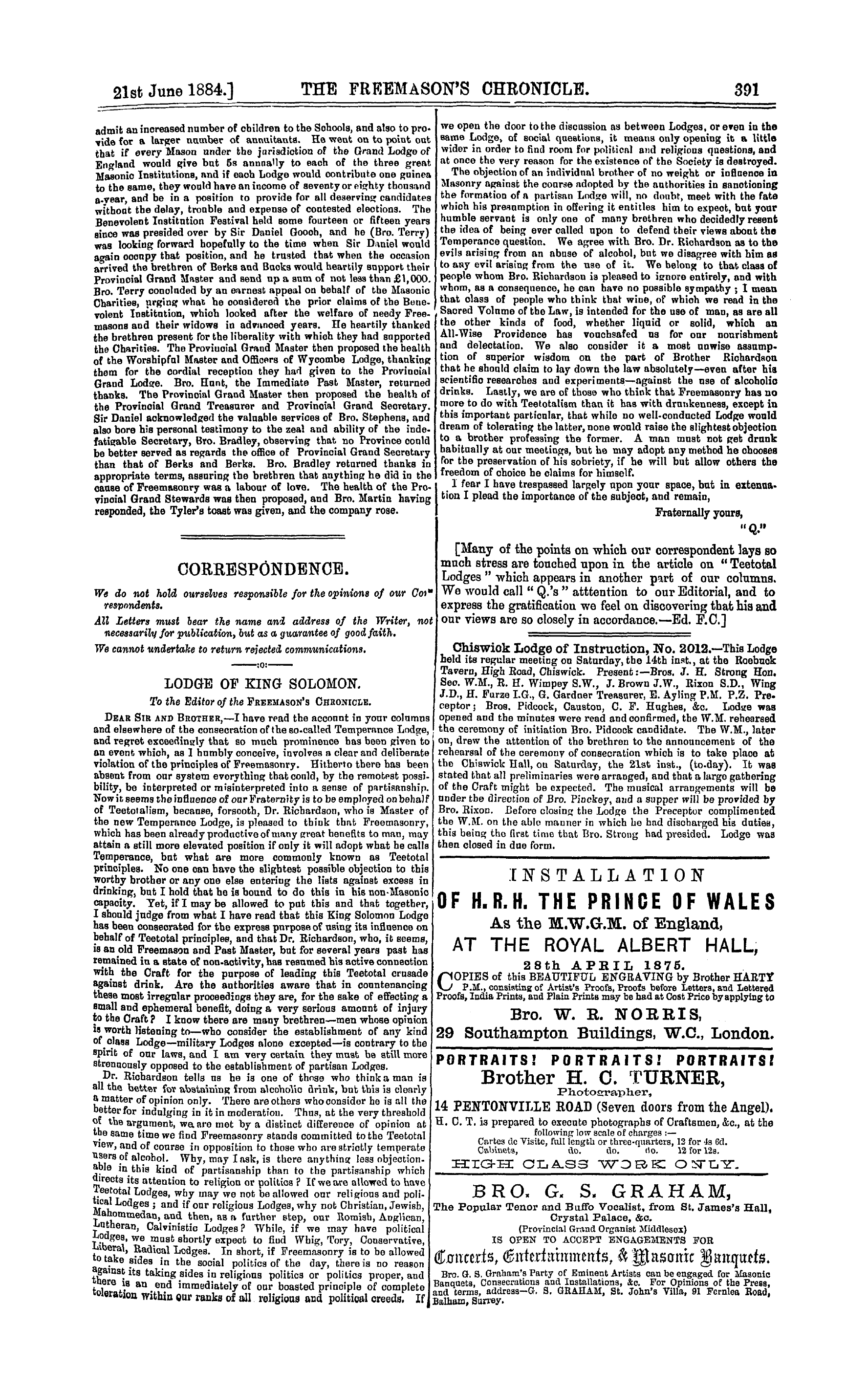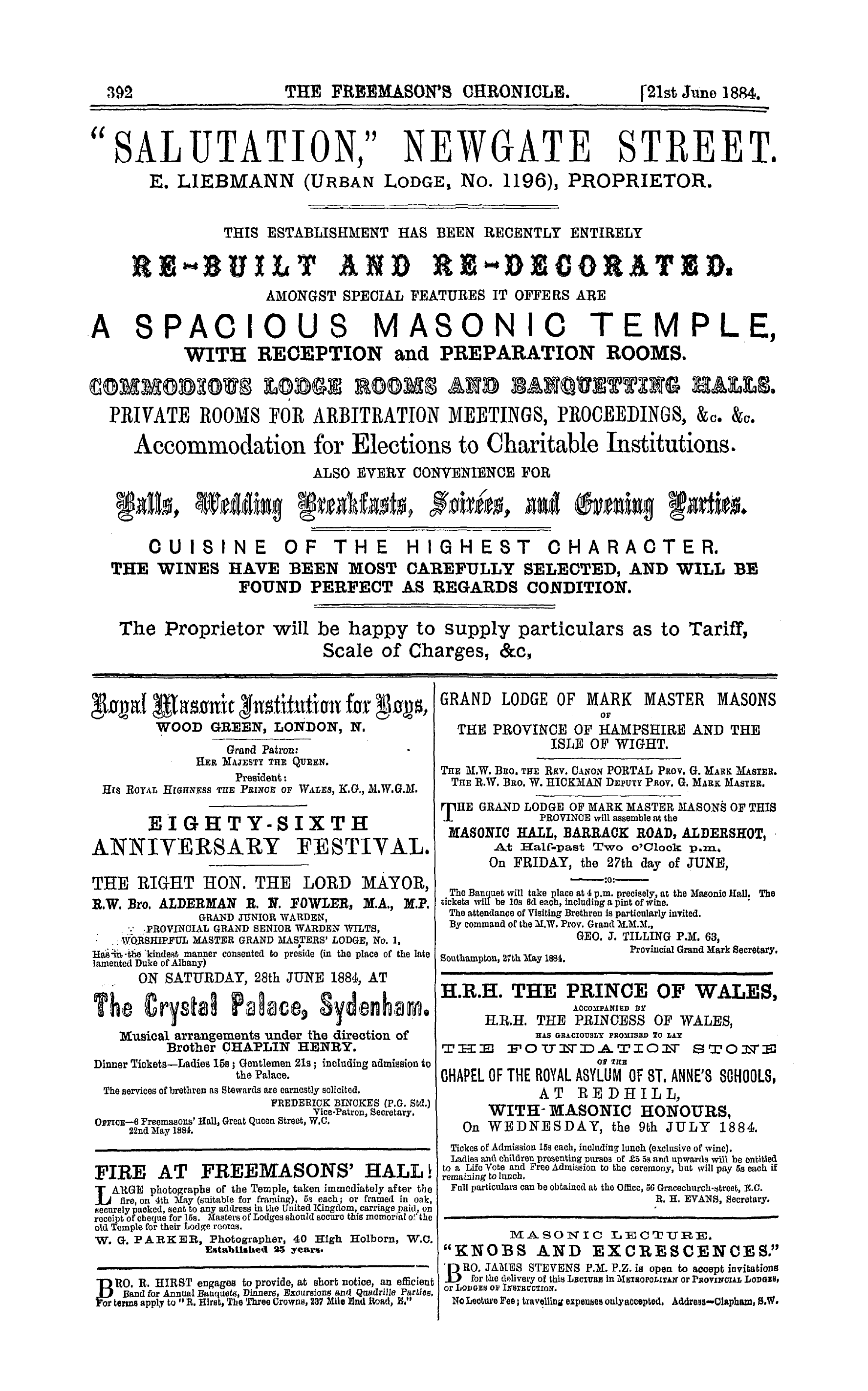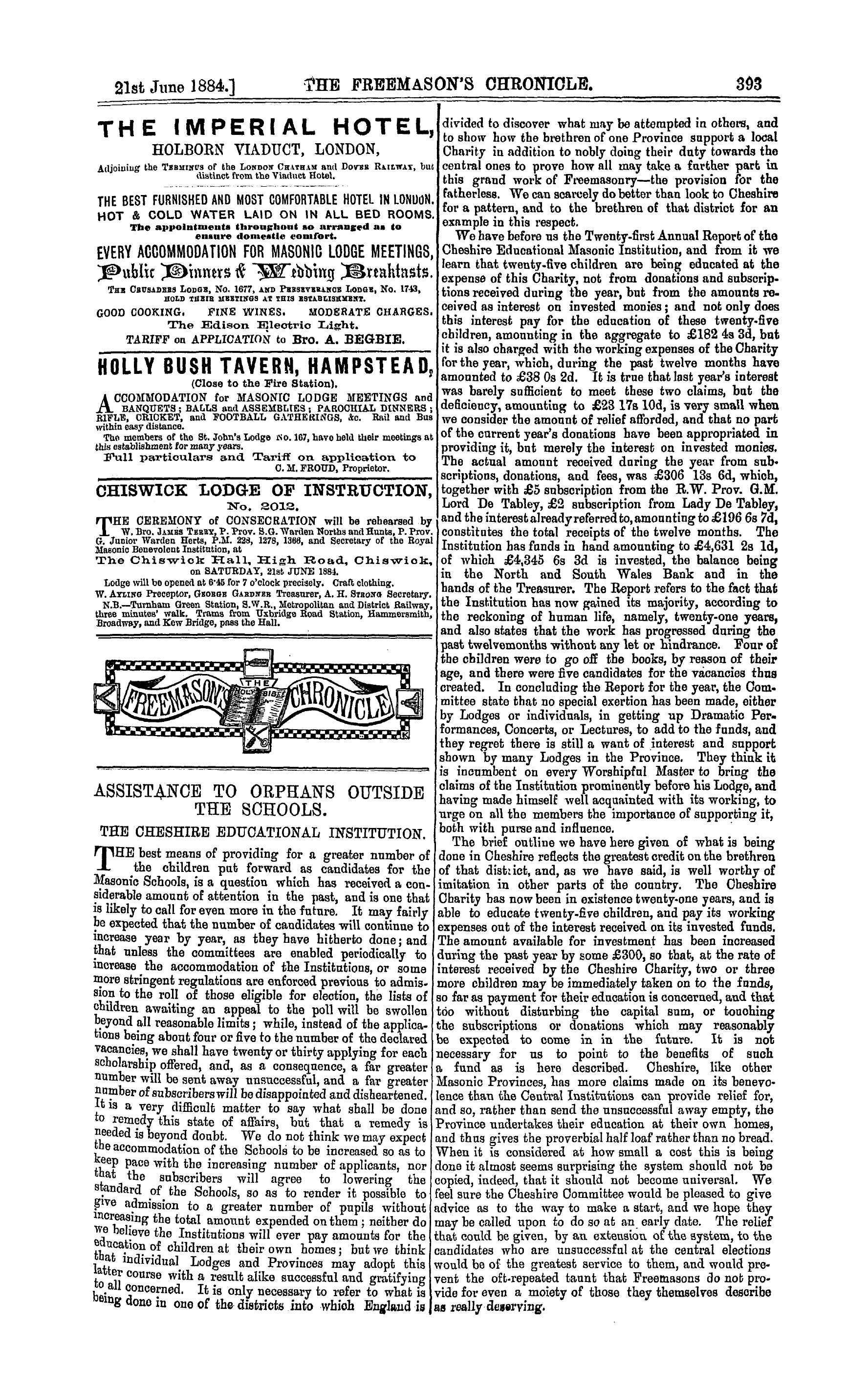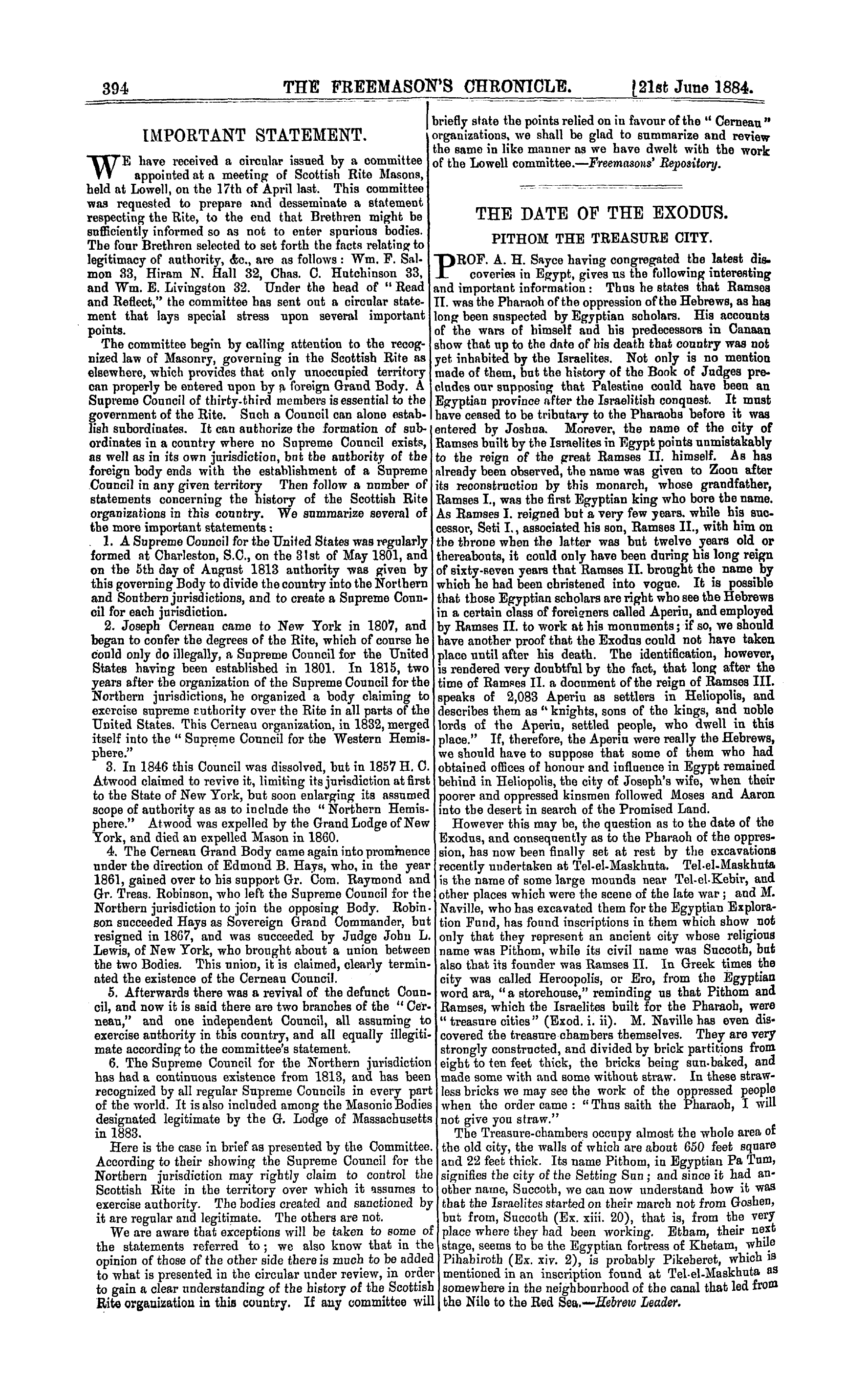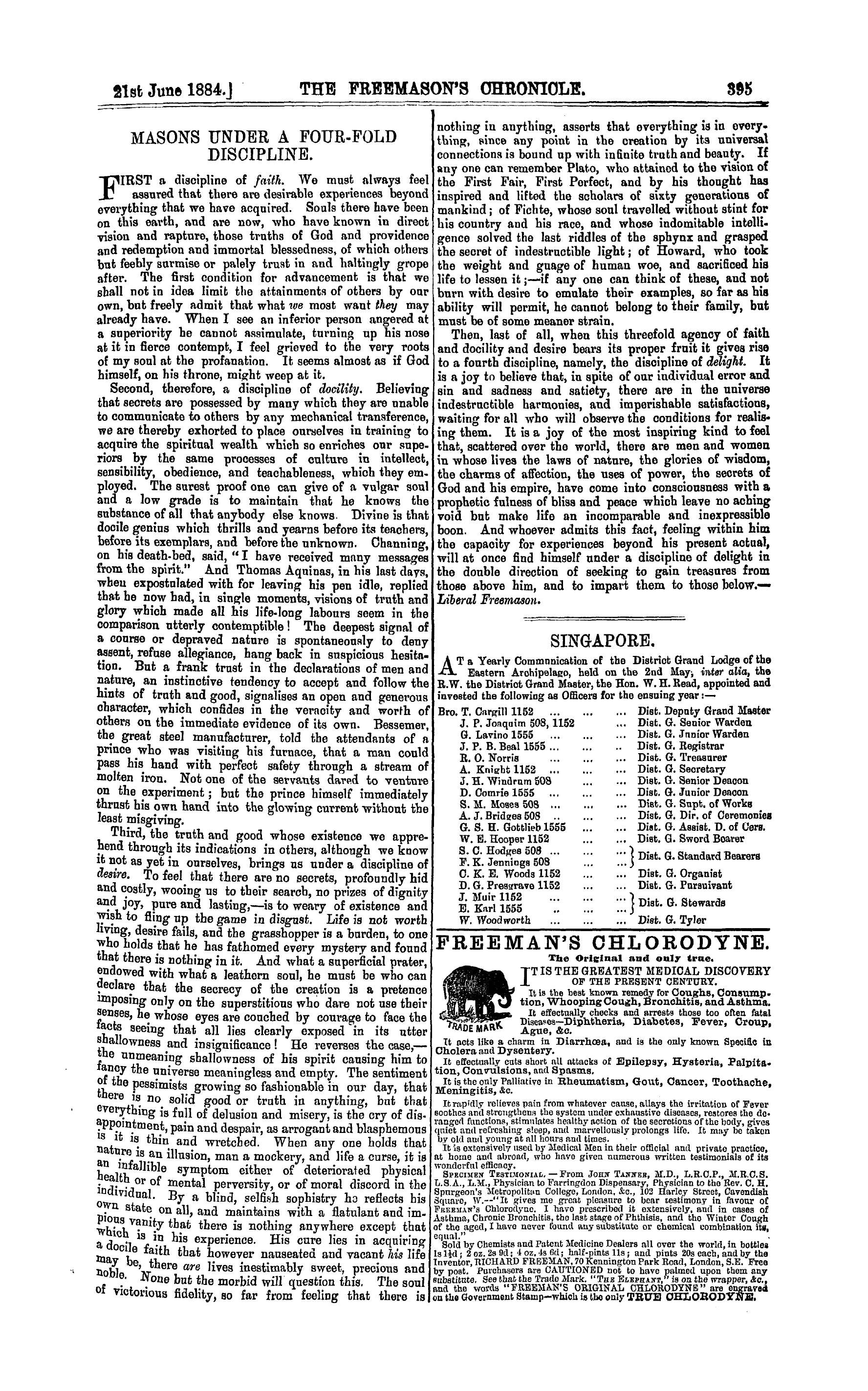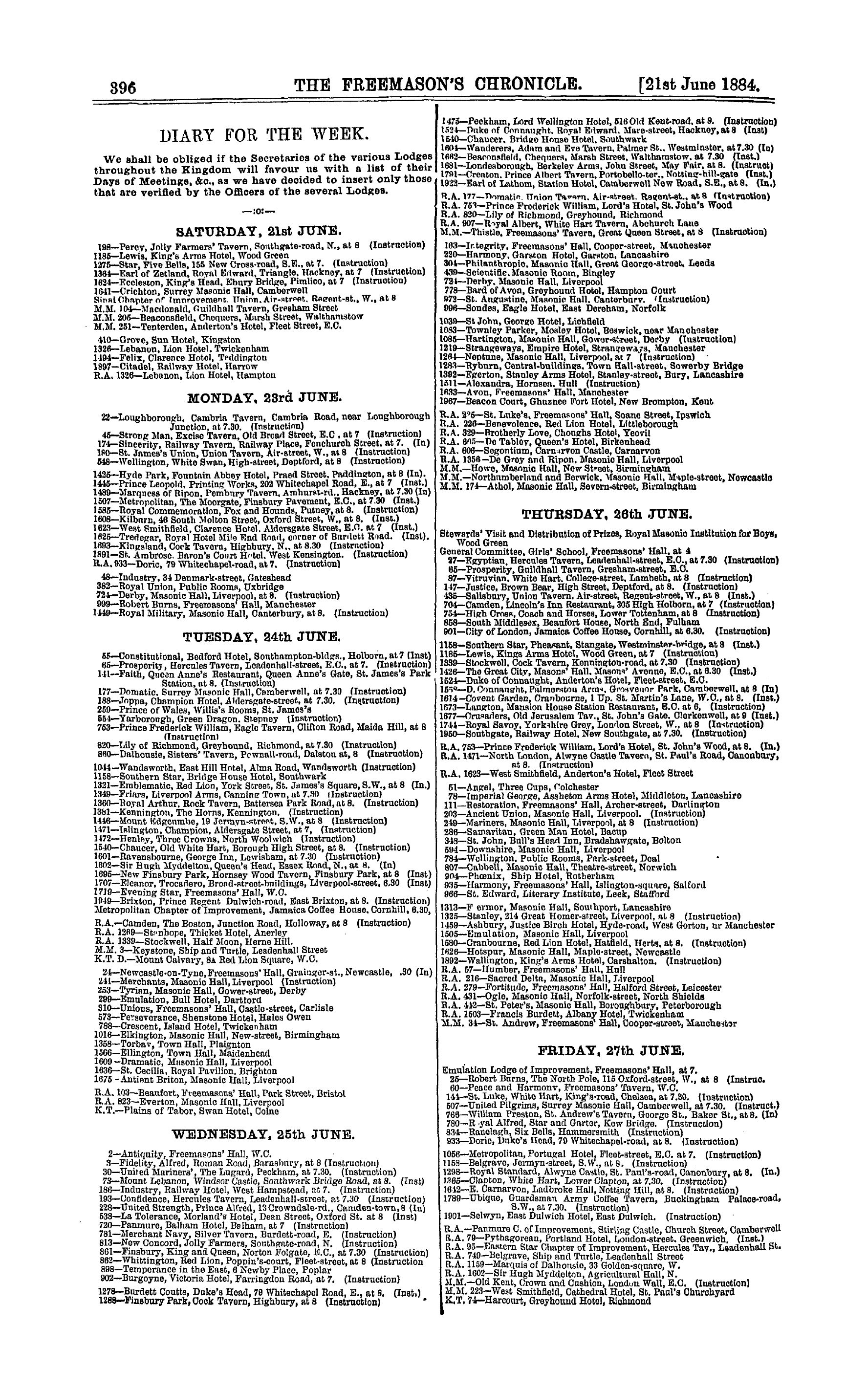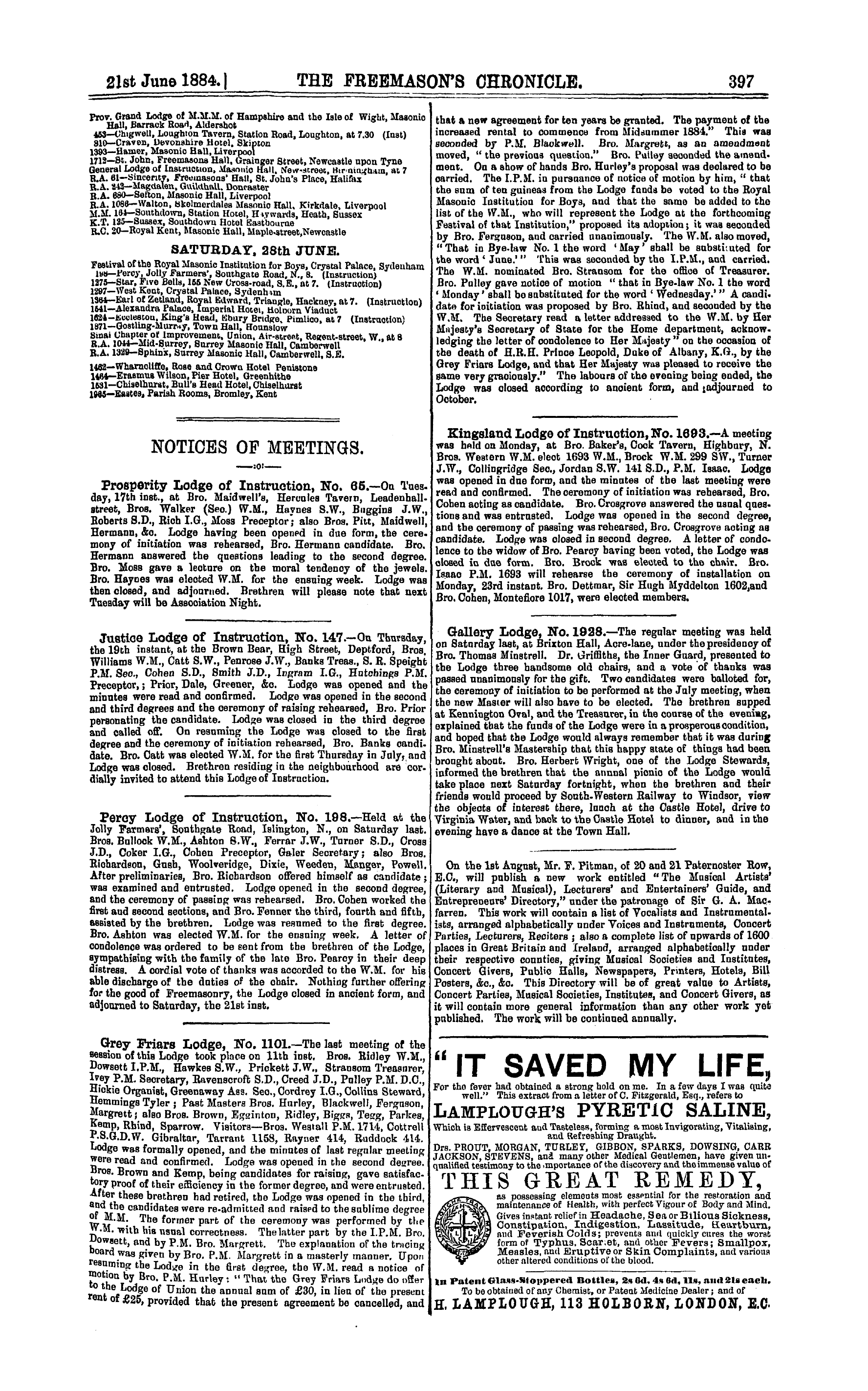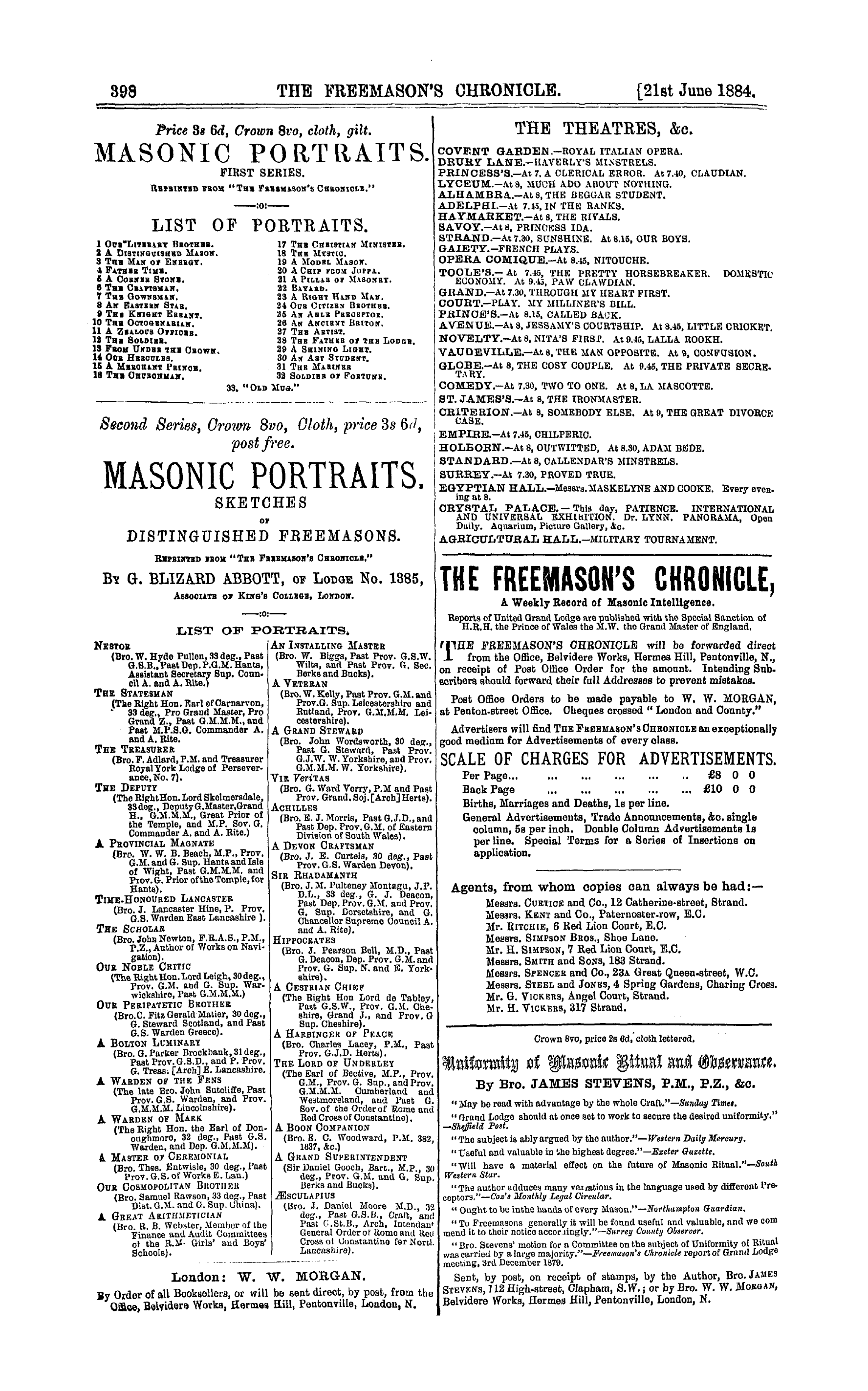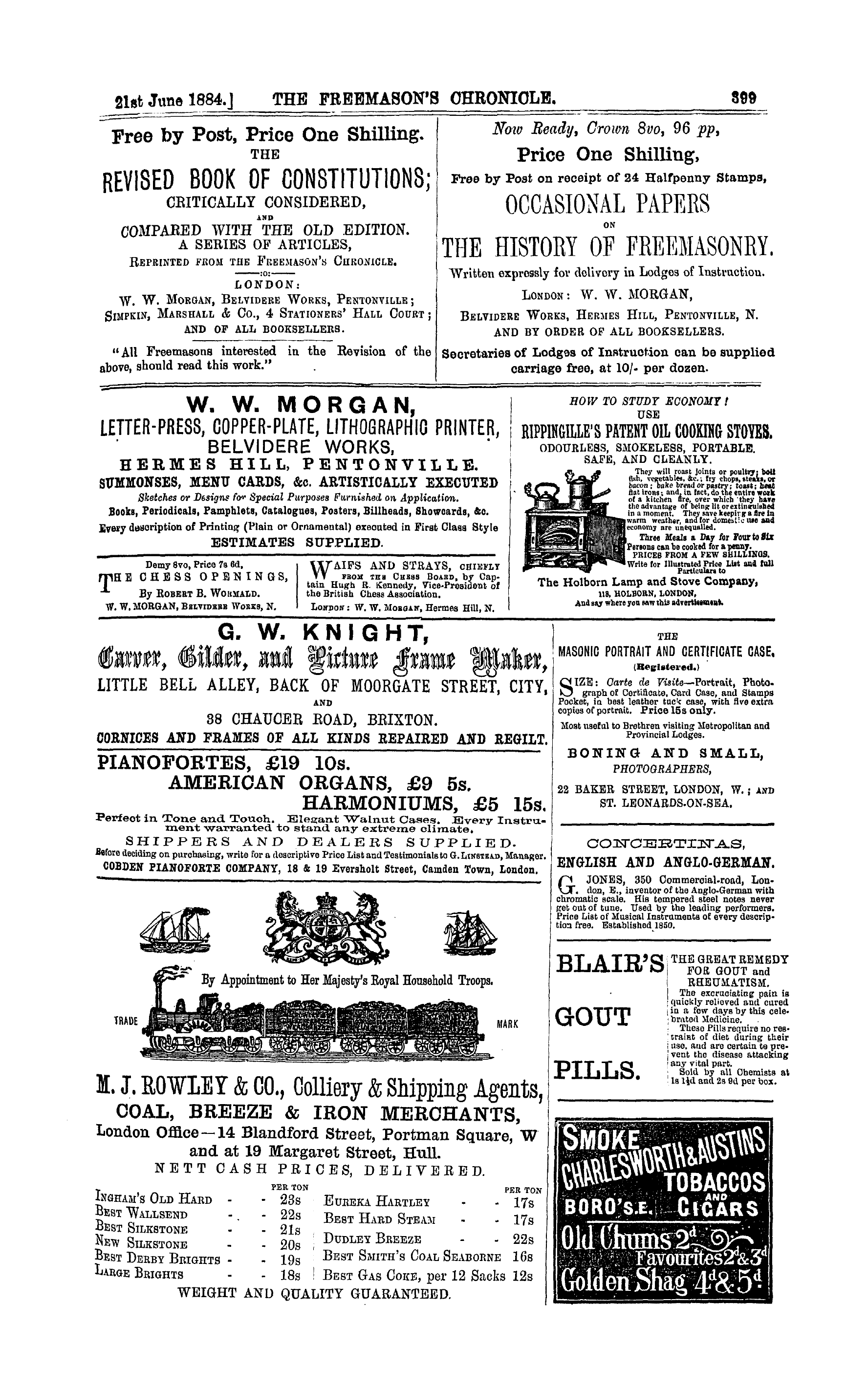-
Articles/Ads
Article IMPORTANT STATEMENT. Page 1 of 1 Article IMPORTANT STATEMENT. Page 1 of 1 Article THE DATE OF THE EXODUS. Page 1 of 1
Note: This text has been automatically extracted via Optical Character Recognition (OCR) software.
Important Statement.
IMPORTANT STATEMENT .
WE have received a circular issued by a committee appointed at a meeting of Scottish Rite Masons , held at Lowell , on the 17 th of April last . This committee waa requested to prepare and desseminate a statement respecting the Rite , to the end that Brethren might be sufficiently informed so as not to enter spurious bodies .
The four Brethren selected to set forth the facts relating to legitimacy of authority , Ac , are as follows : Wm . F . Salmon 33 , Hiram N . Hall 32 , Chas . 0 . Hutchinson 33 ,
and Wm . E . Livingston 32 . Under the head of " Read and Reflect , " the committee has sent out a circular statement that lays special stress upon several important points .
The committee begin by calling attention to the recognized law of Masonry , governing in the Scottish Rite as elsewhere , which provides that only unoccupied territory can properly be entered upon by a foreign Grand Body . A Supreme Council of thirty-third members is essential to the
government of the Rite . Such a Council can alone establish subordinates . It can authorize the formation of subordinates in a country where no Supreme Council exists , as well as in its own jurisdiction , bnt tbe authority of the
foreign body ends with the establishment of a Supreme Council in any given territory Then follow a number of statements concerning the history of the Scottish Rite organizations in this country . We summarize several of the more important statements :
. 1 . A Supreme Council for the United States was rpgularly formed at Charleston , S . C ., on the 31 st of May 1801 , and on tbe 5 th day of August 1813 authority was given by this governing Body to divide the country into the Northern and Southern jurisdictions , aud to create a Supreme Council for each jurisdiction .
2 . Joseph Cerneau came to New York in 1807 , and began to confer the degrees of the Rite , which of course he could only do illegally , a Supreme Council for the United States having been established in 1801 . In 1815 , two years after tbe organization of the Supreme Council for the
Northern jurisdictions , he organized a body claiming to exercise supreme cuthority over the Rite in all parts of the United States . This Cerneau organization , in 1832 , merged itself into the " Supreme Council for the Western Hemisphere . "
3 . In 1846 this Council was dissolved , but in 1857 H . C . Atwood claimed to revive it , limiting its jurisdiction at first to the State of New Tork , but soon enlarging its assumed scope of authority as as to include the " Northern Hemisphere . " Atwood was expelled by the Grand Lodge of New Tork , and died an expelled Mason in 1860 .
4 . The Cerneau Grand Body came again into promroence under the direction of Edmond B . Hays , who , in the year 1861 , gained over to his support Gr . Com . Raymond and Gr . Treas . Robinson , who left the Supreme Council for the Northern jurisdiction to join the opposing Body . Robin .
son succeeded Hays as Sovereign Grand Commander , but resigned in 1867 , and was succeeded by Judge John L . Lewis , of New York , who brought about a union between the two Bodies . This union , it is claimed , clearly terminated the existence of the Cerneau Council .
5 . Afterwards there was a revival of the defunct Council , and now it is said there are two branches of the " Cerneau , " and one independent Council , all assuming to exercise authority in this country , and all equally illegitimate according to the committee's statement .
6 . The Supreme Council for tbe Northern jurisdiction has had a continuous existence from 1813 , and has been recognized by all regular Supreme Councils in every part of the world . It is also included among the Masonic Bodies designated legitimate by the G . Lodge of Massachusetts in 1883 .
Here is the case in brief as presented by the Committee . According to their showing the Supreme Council for the Northern jurisdiction may rightly claim to control the Scottish Rite in the territory over which it assumes to exercise authority . The bodies created and sanctioned by it are regular and legitimate . The others are not .
We are aware that exceptions will be taken to some of the statements referred to ; we also know that in the op inion of those of the other side there is much to be added to what is presented in the circular under review , in order to gain a clear understanding of the history of the Scottish
Rite organization in this country . If any committee will
Important Statement.
briefly state the points relied on in favour of the " Cerneau " organizations , we shall be glad to summarize and review the same in like manner as we have dwelt with the work of the Lowell committee . —Freemasons' Repository .
The Date Of The Exodus.
THE DATE OF THE EXODUS .
PITHOM THE TREASURE CITY . PROP . A . H . Sayce having congregated tbe latest dis . coveriea in Egypt , gives us the following interesting and important information : Thus he states that Ramses II . was the Pharaoh of the oppression of the Hebrews , as has long been suspected by Egyptian scholars . His accounts of the wars of himself and his predecessors in Canaan
show that up to the date of his death that country was not yet inhabited by the Israelites . Not only is no mention made of them , but the history of the Book of Judges precludes our supposing that Palestine could have been an Egyptian province after the Israelitisb conquest . It must
have ceased to be tributary to the Pharaohs before it was entered by Joshua . Morever , the name of the city of Ramses built by the Israelites in Egypt points unmistakably to the reign of the great Ramses II . himself . As has already been observed , the name was given to Zoon after
its reconstruction by this monarch , whose grandfather , Ramses I ., was the first Egyptian king who bore tbe name . As Ramses I . reigned but a very few years , while his successor , Seti I ., associated his son , Ramses II ., with him on the throne when the latter was but twelve years old or
thereabouts , it could only have been during his long reign of Bixty-seven years that Ramses II . brought the name by which he had been christened into vogue . It is possible that those Egyptian scholars are right who see the Hebrews in a certain class of foreigners called Aperiu , and employed
by Ramses II . to work at his monuments ; if so , we should have another proof that the Exodus could not have taken place until after his death . The identification , however , is rendered very doubtful by the fact , that long after the time of Ramses II . a document of the reign of Ramses III .
speaks of 2 , 083 Aperiu as settlers in Heliopolis , and describes them as " knights , sons of the kings , and noble lords of the Aperiu , settled people , who dwell in this place . " If , therefore , the Aperiu were really the Hebrews ,
we should have to suppose that some of them who had obtained offices of honour and influence in Egypt remained behind in Heliopolis , the city of Joseph's wife , when their poorer and oppressed kinsmen followed Moses and Aaron into tbe desert in search of the Promised Land .
However this may be , the question as to the date of the Exodus , and consequently as to the Pharaoh of the oppression , has now been finally set at rest by the excavations recently undertaken at Tel-el-Maskhuta . Tel-el-Maskhuta is the name of some large mounds near Tel-el-Kebir , and
other places which were the scene of the late war ; and M Naville , who has excavated them for the Egyptian Exploration Fund , has found inscriptions in them which show not only that they represent an ancient city whose religious name was Pithom , while its civil name was Succoth , but also that its founder was Ramses II . In Greek times the
city was called Heroopolis , or Ero , from the Egyptian word ara , " a storehouse , " reminding us that Pithom and Ramses , which the Israelites built for the Pharaoh , were " treasure cities" ( Exod . i . ii ) . M . Naville has even
discovered the treasure chambers themselves . They are very strongly constructed , and divided by brick partitions from eight to ten feet thick , the bricks being sun-baked , and made some with and some without straw . In these strawless bricks we may see the work of the oppressed people
when the order came : " Thus saith the Pharaoh , 1 will not give you straw . " The Treasure-chambers occupy almost the whole area or the old city , the walls of which are about 650 feet square
and 22 feet thick . Its name Pithom , in Egyptian Pa Turn , signifies the city of the Setting Sun ; and since it had another name , Succoth , we can now understand how it was that the Israelites started on their march not from Goshen ,
but from , Succoth ( Ex . xiii . 20 ) , that is , from the very place where they bad been working . Etham , their next stage , seems to be the Egyptian fortress of Khetam , while Pihahiroth ( Ex . xiy . 2 ) , is probably Pikeberet , which is mentioned in an inscription found at Tel-el-Maskhuta a 3 somewhere in the neighbourhood of the canal that led from the Nile to the Red Sea . Hebrew Leader .
Note: This text has been automatically extracted via Optical Character Recognition (OCR) software.
Important Statement.
IMPORTANT STATEMENT .
WE have received a circular issued by a committee appointed at a meeting of Scottish Rite Masons , held at Lowell , on the 17 th of April last . This committee waa requested to prepare and desseminate a statement respecting the Rite , to the end that Brethren might be sufficiently informed so as not to enter spurious bodies .
The four Brethren selected to set forth the facts relating to legitimacy of authority , Ac , are as follows : Wm . F . Salmon 33 , Hiram N . Hall 32 , Chas . 0 . Hutchinson 33 ,
and Wm . E . Livingston 32 . Under the head of " Read and Reflect , " the committee has sent out a circular statement that lays special stress upon several important points .
The committee begin by calling attention to the recognized law of Masonry , governing in the Scottish Rite as elsewhere , which provides that only unoccupied territory can properly be entered upon by a foreign Grand Body . A Supreme Council of thirty-third members is essential to the
government of the Rite . Such a Council can alone establish subordinates . It can authorize the formation of subordinates in a country where no Supreme Council exists , as well as in its own jurisdiction , bnt tbe authority of the
foreign body ends with the establishment of a Supreme Council in any given territory Then follow a number of statements concerning the history of the Scottish Rite organizations in this country . We summarize several of the more important statements :
. 1 . A Supreme Council for the United States was rpgularly formed at Charleston , S . C ., on the 31 st of May 1801 , and on tbe 5 th day of August 1813 authority was given by this governing Body to divide the country into the Northern and Southern jurisdictions , aud to create a Supreme Council for each jurisdiction .
2 . Joseph Cerneau came to New York in 1807 , and began to confer the degrees of the Rite , which of course he could only do illegally , a Supreme Council for the United States having been established in 1801 . In 1815 , two years after tbe organization of the Supreme Council for the
Northern jurisdictions , he organized a body claiming to exercise supreme cuthority over the Rite in all parts of the United States . This Cerneau organization , in 1832 , merged itself into the " Supreme Council for the Western Hemisphere . "
3 . In 1846 this Council was dissolved , but in 1857 H . C . Atwood claimed to revive it , limiting its jurisdiction at first to the State of New Tork , but soon enlarging its assumed scope of authority as as to include the " Northern Hemisphere . " Atwood was expelled by the Grand Lodge of New Tork , and died an expelled Mason in 1860 .
4 . The Cerneau Grand Body came again into promroence under the direction of Edmond B . Hays , who , in the year 1861 , gained over to his support Gr . Com . Raymond and Gr . Treas . Robinson , who left the Supreme Council for the Northern jurisdiction to join the opposing Body . Robin .
son succeeded Hays as Sovereign Grand Commander , but resigned in 1867 , and was succeeded by Judge John L . Lewis , of New York , who brought about a union between the two Bodies . This union , it is claimed , clearly terminated the existence of the Cerneau Council .
5 . Afterwards there was a revival of the defunct Council , and now it is said there are two branches of the " Cerneau , " and one independent Council , all assuming to exercise authority in this country , and all equally illegitimate according to the committee's statement .
6 . The Supreme Council for tbe Northern jurisdiction has had a continuous existence from 1813 , and has been recognized by all regular Supreme Councils in every part of the world . It is also included among the Masonic Bodies designated legitimate by the G . Lodge of Massachusetts in 1883 .
Here is the case in brief as presented by the Committee . According to their showing the Supreme Council for the Northern jurisdiction may rightly claim to control the Scottish Rite in the territory over which it assumes to exercise authority . The bodies created and sanctioned by it are regular and legitimate . The others are not .
We are aware that exceptions will be taken to some of the statements referred to ; we also know that in the op inion of those of the other side there is much to be added to what is presented in the circular under review , in order to gain a clear understanding of the history of the Scottish
Rite organization in this country . If any committee will
Important Statement.
briefly state the points relied on in favour of the " Cerneau " organizations , we shall be glad to summarize and review the same in like manner as we have dwelt with the work of the Lowell committee . —Freemasons' Repository .
The Date Of The Exodus.
THE DATE OF THE EXODUS .
PITHOM THE TREASURE CITY . PROP . A . H . Sayce having congregated tbe latest dis . coveriea in Egypt , gives us the following interesting and important information : Thus he states that Ramses II . was the Pharaoh of the oppression of the Hebrews , as has long been suspected by Egyptian scholars . His accounts of the wars of himself and his predecessors in Canaan
show that up to the date of his death that country was not yet inhabited by the Israelites . Not only is no mention made of them , but the history of the Book of Judges precludes our supposing that Palestine could have been an Egyptian province after the Israelitisb conquest . It must
have ceased to be tributary to the Pharaohs before it was entered by Joshua . Morever , the name of the city of Ramses built by the Israelites in Egypt points unmistakably to the reign of the great Ramses II . himself . As has already been observed , the name was given to Zoon after
its reconstruction by this monarch , whose grandfather , Ramses I ., was the first Egyptian king who bore tbe name . As Ramses I . reigned but a very few years , while his successor , Seti I ., associated his son , Ramses II ., with him on the throne when the latter was but twelve years old or
thereabouts , it could only have been during his long reign of Bixty-seven years that Ramses II . brought the name by which he had been christened into vogue . It is possible that those Egyptian scholars are right who see the Hebrews in a certain class of foreigners called Aperiu , and employed
by Ramses II . to work at his monuments ; if so , we should have another proof that the Exodus could not have taken place until after his death . The identification , however , is rendered very doubtful by the fact , that long after the time of Ramses II . a document of the reign of Ramses III .
speaks of 2 , 083 Aperiu as settlers in Heliopolis , and describes them as " knights , sons of the kings , and noble lords of the Aperiu , settled people , who dwell in this place . " If , therefore , the Aperiu were really the Hebrews ,
we should have to suppose that some of them who had obtained offices of honour and influence in Egypt remained behind in Heliopolis , the city of Joseph's wife , when their poorer and oppressed kinsmen followed Moses and Aaron into tbe desert in search of the Promised Land .
However this may be , the question as to the date of the Exodus , and consequently as to the Pharaoh of the oppression , has now been finally set at rest by the excavations recently undertaken at Tel-el-Maskhuta . Tel-el-Maskhuta is the name of some large mounds near Tel-el-Kebir , and
other places which were the scene of the late war ; and M Naville , who has excavated them for the Egyptian Exploration Fund , has found inscriptions in them which show not only that they represent an ancient city whose religious name was Pithom , while its civil name was Succoth , but also that its founder was Ramses II . In Greek times the
city was called Heroopolis , or Ero , from the Egyptian word ara , " a storehouse , " reminding us that Pithom and Ramses , which the Israelites built for the Pharaoh , were " treasure cities" ( Exod . i . ii ) . M . Naville has even
discovered the treasure chambers themselves . They are very strongly constructed , and divided by brick partitions from eight to ten feet thick , the bricks being sun-baked , and made some with and some without straw . In these strawless bricks we may see the work of the oppressed people
when the order came : " Thus saith the Pharaoh , 1 will not give you straw . " The Treasure-chambers occupy almost the whole area or the old city , the walls of which are about 650 feet square
and 22 feet thick . Its name Pithom , in Egyptian Pa Turn , signifies the city of the Setting Sun ; and since it had another name , Succoth , we can now understand how it was that the Israelites started on their march not from Goshen ,
but from , Succoth ( Ex . xiii . 20 ) , that is , from the very place where they bad been working . Etham , their next stage , seems to be the Egyptian fortress of Khetam , while Pihahiroth ( Ex . xiy . 2 ) , is probably Pikeberet , which is mentioned in an inscription found at Tel-el-Maskhuta a 3 somewhere in the neighbourhood of the canal that led from the Nile to the Red Sea . Hebrew Leader .
